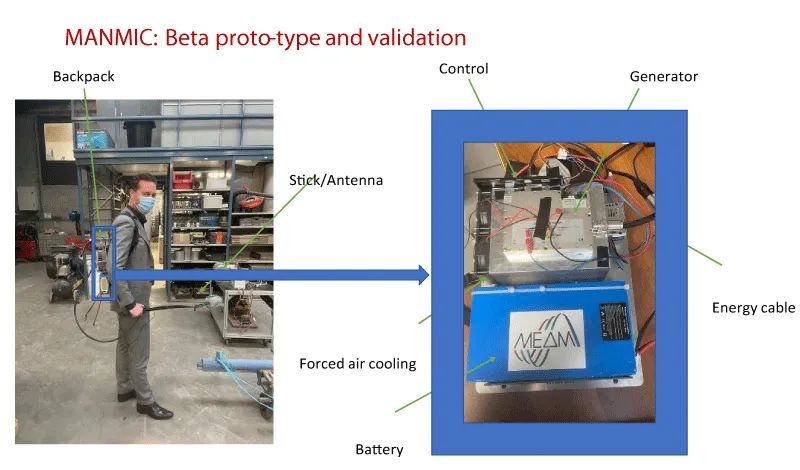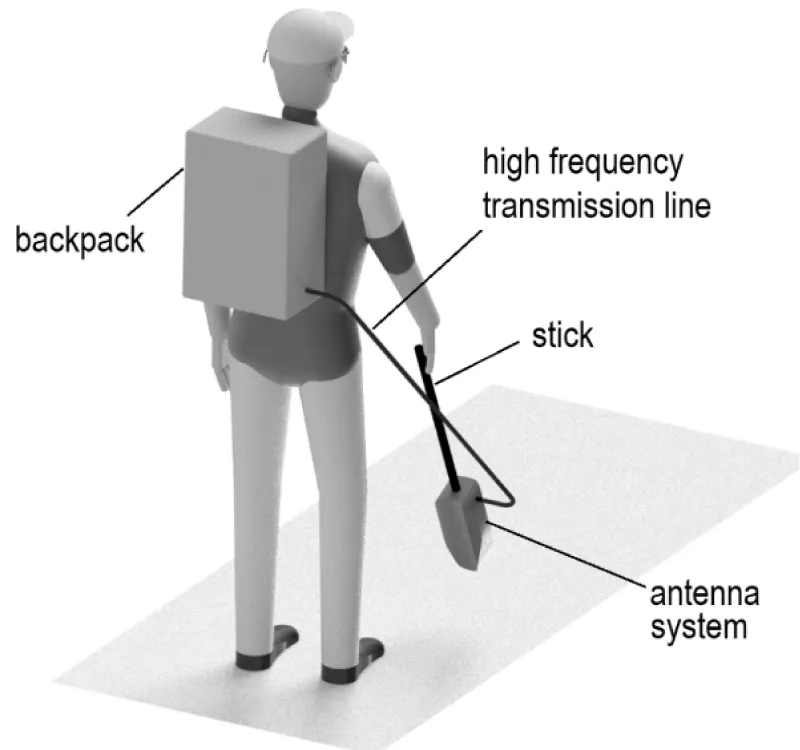Global Journal of Ecology
Microwave energy applications management: Weed management MANMIC: Manual microwave (2.45GHz, 250W)
Carlo Groffils*
Cite this as
Groffils C (2022) Microwave energy applications management: Weed management MANMIC: Manual microwave (2.45GHz, 250W). Glob J Ecol 7(2): 050-051. DOI: 10.17352/gje.000060Copyright
© 2022 Groffils C. This is an open-access article distributed under the terms of the Creative Commons Attribution License, which permits unrestricted use, distribution, and reproduction in any medium, provided the original author and source are credited.Today herbicides are the main method of weed management in agriculture/horticulture, community green servicing and private individuals Table 1.
However, given the fact that they can have harmful effects on the environment, non-target organisms, and on human and animal health, reducing these products has become a priority to policy and people. Environmentally friendly alternatives are lacking or are largely less performing than herbicides. Examples of such alternative methods and processes for sustainable weed management are mechanical removal, manually or partially automated, or differences in soil management practices. With respect to farming, one of the main alternatives is the use of mechanical devices, which are too slow for their requirements, complex, less efficient, and not always applicable in relation to the climatic conditions. With respect to the community green services and gardening the currently mostly widely accepted methods are the use of steaming, in the form of manually operated systems, small or bigger machines, and the use of gas burning. The first mentioned is however poorly performing in terms of extinguishment speed, and necessary treatment frequencies. Moreover, with the presence of hydraulics and the heating requirements for steaming, the process is globally highly inefficient. The latter mentioned is an unecological solution in terms of CO2 emissions and is dangerous to initiate widespread fires. Both methods are moreover economically costly with little opportunities for optimization and thus cost reduction.
MANMIC: Beta proto-type and validation
RAFTIR (Tiense Sugar Refinery) and MEAM (Microwave Energy Applications Management) propose an innovative solution for ecological and sustainable weed extermination based on thermo-electrical methods, and more specifically by means of microwave technology. The main benefits of using microwave techniques in comparison to the mentioned alternatives, are the higher extinguishment speed, the lower treatment frequency, the lower energy demand and possibility to decarbonize the needed energy. It is also possible that the number of needed treatments can be significantly reduced. The latter mentioned is due to the fact that microwaves pyro-shocks and burns the plant and plant stem internally, in comparison to steaming, which is a surface heat treatment. The potential damage and secondary impacts to other plants and organisms is significantly low as the energy is oriented very locally. Inherent to microwaving, as in other applications, is the electrification principle, and thus the significantly increased energy efficiency. As the hydraulics and pneumatics are removed in comparison to conventional processes, an additional gain in energy efficiency is achieved. This trend of electrification for energy efficiency purposes is perceived in any mechatronic applications, as for example passenger vehicles made the transition from hydraulic to electric power steering. In addition, no supplementary resources, such as water, are necessary, and thus the overall ecological footprint is low. As such the project fits nicely into the Green Deal (H2020), as promoted by the European Union. The proposed innovation, named MANMIC, is a mobile and manual microwaving unit for weed management. It is based on a limited amount of light weight components, such as a micro-wave generator, a battery energy storage, a coaxial cable and a handle, a wave guide adaptor head and antenna pointing towards the weeds. As mentioned earlier, performance and user acceptance wise, the application of microwaving technology is faster than an equivalent solution based on steaming or thermal heating, burning or mechanics and the goal is to achieve a < 3 s duration of weed plant extermination. Moreover, the treatment frequency is expected to be 2 to 3 times lower. The user safety, legislations and regulations must be proven; however, they should be better or similar to any of the other conventional methods. Business wise consumer grade and mass market is targeted. The cost of the solution is low due to the limited amount of materials and components, and the target price would be similar to the one of an electric bike. Moreover, the application requires low maintenance and inherits a high life span due to the limited amount of moving mechanical parts. Based on preliminary market studies, MEAM and RAFTIR predict a fast trajectory from demonstrator to product to market and a high product demand. However, before being able to start the marketing and production, the development and demonstration of the concept must be proven.
Article Alerts
Subscribe to our articles alerts and stay tuned.
 This work is licensed under a Creative Commons Attribution 4.0 International License.
This work is licensed under a Creative Commons Attribution 4.0 International License.



 Save to Mendeley
Save to Mendeley
